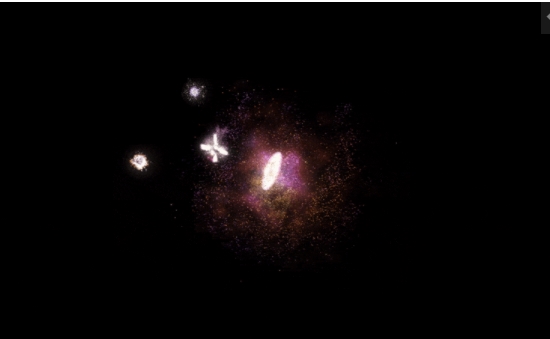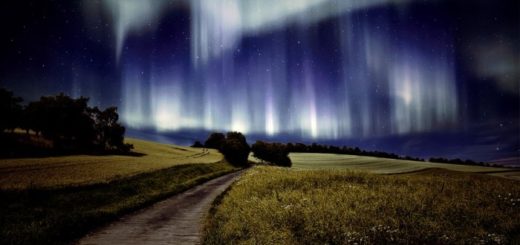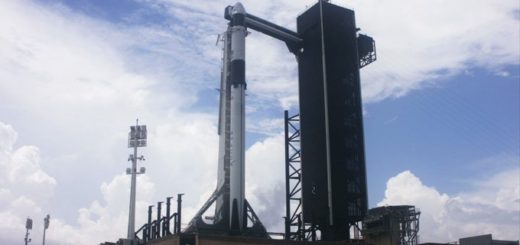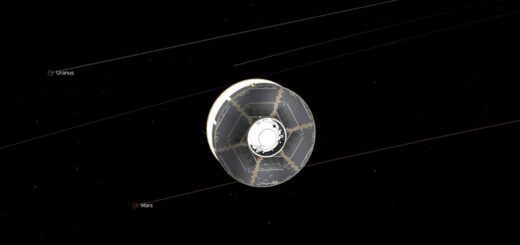Ancient ‘ring of fire’ galaxy found glaring at Earth across space and time

Eleven billion years ago, a hot, active, galaxy that looked like an eye glared across space. Now, using data from the W.M. Keck Observatory in Hawaii and the Hubble Space Telescope, astronomers have captured a snapshot of its unblinking gaze.
This galaxy, R5519, is made up of a flat ring of stars, with a hole in the middle where astronomers believe another blob of stars punched through. Galaxies like this, known as “collisional ring galaxies,” turn up infrequently in the modern universe. But this is the first time astronomers have seen one so old and far away; at 11 billion light-years from our planet, its ancient light is only just reaching Earth.
Galaxies in the early universe tended to be very active, churning up hot gas and turning it into stars. R5519 is no exception, the researchers said in a statement.
“It is making stars at a rate 50 times greater than the Milky Way,” Tiantian Yuan, an astronomer at Australia’s Swinburne University of Technology and lead discoverer of the galaxy, said in the statement. “Most of that activity is taking place on its ring – so it truly is a ring of fire.”
Most of the ring-shaped galaxies in our universe form through internal processes, the researchers said. Only 1 in 1,000 in the modern universe forms through collisions. Still, according to the new paper, which was published May 25 in the journal Nature Astronomy, this galaxy’s shape does appear to be the result of a collision with another object.
A composite image made from multiple single-color Hubble Space Telescope images shows what the galaxy looks like from Earth.
A composite image made from multiple single-color Hubble Space Telescope images shows what the galaxy looks like from Earth. (Image credit: Tiantian Yuan/Hubble Space Telescope)
This monumental collision offers clues about the conditions that prevailed during the early universe, the scientists said.
So, how did R5519’s unblinking “Eye of Sauron” shape come into being?
For a ring to form, a galaxy like this has to start as a wide, flat disk of stars and gas, the researchers said. One such disk that formed about 9 billion years ago turned into the spiral Milky Way. Another formed Andromeda, a neighboring galaxy.
But R5519’s disk, if it indeed existed before another object punched that hole in its center, would have existed a full 2 billion years earlier, just 3 billion years after the Big Bang.
“This discovery is an indication that disk assembly in spiral galaxies occurred over a more extended period than previously thought,” Kenneth Freeman, an Australian National University astronomer and co-author of the paper said in the statement.



 Creators of mankind
Creators of mankind Description of “Tall white aliens”
Description of “Tall white aliens” Where they came from?
Where they came from? About hostile civilizations
About hostile civilizations The war for the Earth
The war for the Earth “Tall white aliens” about eternal life
“Tall white aliens” about eternal life Video: “Nordic aliens”
Video: “Nordic aliens” Aliens
Aliens Alien encounters
Alien encounters The aliens base
The aliens base UFO
UFO Technology UFO
Technology UFO Underground civilization
Underground civilization Ancient alien artifacts
Ancient alien artifacts Military and UFO
Military and UFO Mysteries and hypotheses
Mysteries and hypotheses Scientific facts
Scientific facts


















